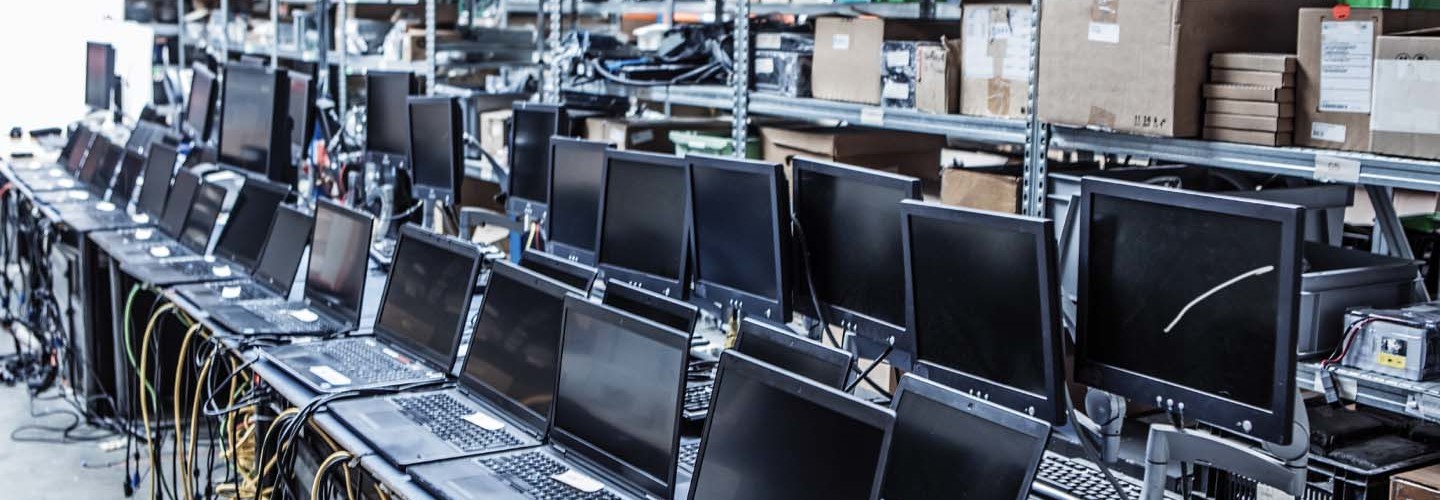How Important Is Device Recycling and Managing E-Waste?
According to the World Health Organization, e-waste is the fastest-growing solid waste stream in the world, increasing three times faster than the global population. With 50 million tons of e-waste generated each year — the equivalent of throwing out 1,000 laptops per second — this means trouble. Without proper treatment and disposal, e-waste can produce dangerous materials (dioxins, lead, mercury and others on WHO’s list of 10 chemicals of public health concern) that adversely affect the environment and its inhabitants.
For example, e-waste that ends up in landfills can release toxic compounds into the air and groundwater, posing risks to wildlife. People who are exposed to e-waste can experience premature birth, respiratory issues and other health concerns.
With just 20 percent of global e-waste officially reported as properly collected and recycled, according to the Geneva Environment Network, “the remaining 80% is undocumented, with much ending up buried under the ground for centuries.” This issue will only escalate as devices become more prolific, smaller and complex, it notes.
Enter device recycling programs. Not just a means to support students who can’t afford a new laptop or tablet, device recycling — and proper e-waste management in general — is critical to fostering a more sustainable environment.
How Can Institutions Best Manage Device Recycling and E-Waste?
There are several ways that universities can manage device recycling and e-waste. Some establish a device refresh cycle, consistently retiring employees’ aging devices and reallocating others. The University of Rochester and Columbia University, meanwhile, have implemented pickup programs for students and faculty to safely and securely recycle miscellaneous personal and school-owned electronics, batteries and more.
This type of program broadens access to secure electronics recycling and simplifies disposal for people with devices at the end of their lifecycles. Considering the wide range of devices that students use — smart TVs, gaming consoles, speakers and more — this can prove particularly effective on its own or in conjunction with a device refresh cycle. Hosting a schoolwide electronics recycling event, as Swarthmore College and other institutions have done, can also be successful.
But collecting the devices to recycle is only part of the e-waste management battle. Institutions also need to comply with their local municipality’s methods for dealing with discarded electronics. They should also check with device manufacturers to see if they have recycling programs. Apple, for instance, offers credits in exchange for old tech. Alternatively, institutions can avoid potential headaches and save university resources by working with a partner to establish a device management program.
LEARN MORE: Take the stress out of asset disposition with a full-cycle refresh solution.
How Does This Support Sustainability Initiatives on College Campuses?
So, can colleges and universities make a dent on sustainability? According to the University of Houston, recycling 1 million laptops saves enough energy to supply over 3,500 U.S. homes with electricity per year. And for every 1 million cellphones that are recycled, 35,000 pounds of copper, 772 pounds of silver, 75 pounds of gold and 33 pounds of palladium can be recovered.
In other words, e-waste management is an important solution in the fight for environmental sustainability. So, as university sustainability initiatives aim to tackle climate change and find ways to reduce their carbon footprint, electronics recycling stands to play a key role. And higher education institutions are uniquely positioned to promote device recycling in a way that no households and few establishments are.










